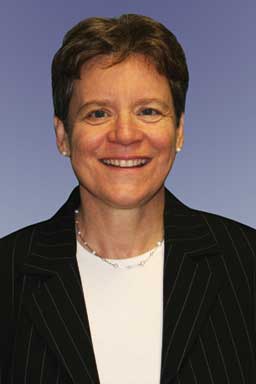From the Executive Editor
KTT in Kenya = Capacity building
The latest buzz phrase is KTT or “knowledge translation and transfer.” KTT means taking new research findings and translating them into useful information that veterinarians and producers can put into practice. Our implication statements assist with that process and help you to carry the information to producers in the field. KTT is also accomplished through writing articles for producer magazines and speaking at veterinary and producer meetings, an essential role of researchers. Research is relevant when the new knowledge improves what is done in our industry.
In developing countries, KTT is called “capacity building.” It, too, provides veterinary technicians and pig farmers with information relevant to their industry. It aims to give them the opportunity to improve how they manage pigs in direct response to our research findings.
Veterinarians Without Borders, Canada, funded the capacity-building component of my work in Kenya. We put on 1-day workshops for government employees who work directly with subsistence pig farmers. These employees included veterinary, livestock, and public-health technicians, veterinarians, adult-education specialists, and social workers whose role is to provide advice to farmers’ groups. We then facilitated the government workers to train the farmers. This is a “train the trainers” model of education. Most farmer workshops took place in a farmer’s yard, under a mango tree.
This capacity building did improve management and the level of farmer knowledge. We asked the farmers what they implemented after our research farm visits and workshops. The management changes and the proportion of farmers who implemented each change are as follows: fed the pig more and a wider variety of feed (58%), estimated the pig’s weight prior to sale (49%), housed the pig (34%), gave the pig medication (29%), and bred the sows two times versus one time per estrus (17%). Farmers were 2.8 times more likely to know about Taenia solium, the tapeworm that causes epilepsy due to neurocysticercosis, after the workshop than before and were 3.6 times more likely to know about it after the workshop plus one-on-one training at their farm (P < .001). However, people who had personally attended the workshop were 4.6 times more likely to know about the disease than people who lived on a farm where someone else attended (P < .001). If this association is transferable to North America, we need to encourage multiple people from each farm to attend workshops. We cannot rely on those who attend to spread the knowledge.
At the end of one training day, a pig farmer approached me, smiling from ear to ear and showing me her finger. Loosely translated from Swahili, she said, “Do you remember me? You cured my finger and now my hand is without pain.” When I met her in November 2006, she owned two beautiful long brown sows that were nursing 14 piglets. Her right hand was pulsing with pain from an infected finger. The distal third of the finger had turned black. She had no means of getting medical attention. I suggested she soak her hand in hot salt water three times a day. Either because of me or in spite of me, her finger is now fully functional. Like so many of the farmers we interact with, it is these personal encounters that add extra meaning to our work. The Kenyan farmers, like pig farmers in North America, are genuinely good people, hard-working and dedicated to doing the best for their pigs. I feel a real connection to these farmers and the whole community, where the charity I started, Children of Bukati, is supporting the education of AIDS orphans.
In 2006, there were 150 AIDS orphans at the local elementary school and many more who were staying at home. Today, the charity is supporting the education of 514 orphans. All orphans in the community are being educated. With the help of our donors, the children are eating lunch 3 days a week. Altogether, they consume 140 kg of beans and 140 kg of corn each day. The school is working towards sustaining the education of the orphans without financial help from the charity, beginning in 2013. They have rented 7 acres of land to grow maize, beans, and kale. Our long-term goal is to purchase 10 acres of land. We built a corn grist mill for the local women to grind their corn to make ugali, the staple food in this region. Women pay a small fee for this service. The profits from the mill purchased a dairy cow for the school. There is a good local market for the milk. The school’s three sows have produced piglets that were sold at weaning, and the livestock enterprise now includes three sheep. The school also sells eggs and breeding birds from their chicken enterprise. More information about this project can be found at www.childrenofbukati.com.
KTT or capacity building brings researchers in contact with the world outside the university. It enables our work to effect change in the industries we serve. It puts a name and a face to the people whose lives can be improved by the work we do. This makes our work so much more worth the effort.
--Cate Dewey, DVM, MSc, PhD

